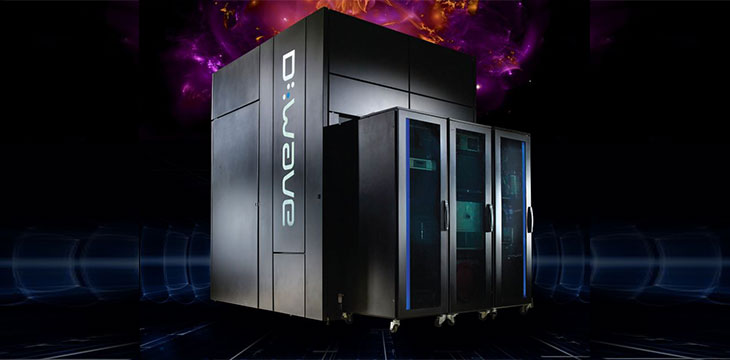|
Getting your Trinity Audio player ready...
|
No, quantum computers are not “here” yet.
A quantum leap for humanity?
Last week, news broke out of Canadian quantum computing company D-Wave’s “quantum computer” which have, until now, only been accessible to well-funded research laboratories (each unit costs $15 million). The company is planning to raise hundreds of millions of dollars this year on top of the $50 million they just received from investors in order to open up their processors to the public through cloud.
“Quantum computing is finally here,” CNBC says, “and a Canadian company has a plan to bring it to the masses.”
While news like this should be a glorious day for humanity, unfortunately, it may be more of a sales pitch aimed at gaining additional investments rather than a quantum leap for mankind. D-Wave is making the media waves in an effort to secure their place in the market. They are, after all, playing with giants like IBM, Google and Microsoft.
Not a quantum computer
Contrary to D-Wave’s branding of their product, their computer is not a quantum computer but a quantum annealer—which D-Wave’s promotional document confirms.
While the two use the same fundamental concepts, they are not the same in build or in function. In a Medium post, quantum physicist Anastasia Marchenkova wrote an easily digestible piece clearly explaining the difference between the two.
“The D-Wave machine is a quantum annealer running adiabatic quantum computing algorithms. This is great for optimizing solutions to problems by quickly searching over a space and finding a minimum (or “solution”). The latest announcement from Google states that the D-Wave machine is more than 10⁸ times faster than simulated annealing running on a single core. However, Selby’s algorithm still performs better than the D-Wave quantum computer, so there’s a long way to go for D-Wave.
But quantum annealing works best on problems where there are a lot of potential solutions and finding a “good enough” or “local minima” solution, making something like faster flight possible. D-Wave could be able to speed up research on better aerospace materials which can shield from radiation or stand up to heat, or model the flow over the wing, which Airbus is counting on to speed R&D.
However, quantum annealing will never be able to run Shor’s algorithm, which breaks common forms of modern cryptography used to protect our bank information, logins, and all web communication,” Marchenkova wrote.
On the other hand, there are higher expectations of a fully functional quantum computer. And the challenges are even more monumental.
“Proposals exist for the creation of multiple quantum computers consisting of dual entangled qubits. The problem with these proposals is that not only are the solutions outside the range of present technology but that we don’t even know if the fundamental particles that we seek to entangle exist,” says Dr. Craig S. Wright.
So what’s with the hype?
So why not just call it a “quantum annealer,” which is what it is? The term just doesn’t turn as much heads and does not hold as much weight in the public ear as the term “quantum computer.” So this may be more for strategic branding than scientific accuracy.
And why hype it up as much as they do—as if we can all start actually feeling the difference when the quantum annealer they have is not even any more powerful than a mobile phone? As mentioned earlier, the short answer is money. Investment money poured into quantum computing research is nothing to joke about: $3 billion from IBM in 2015, $15 billion from Alibaba last year, $10 billion from China, and probably billions more to come. A headline like CNBC’s may just reel in those hundreds of millions of dollars D-Wave is shooting for this year.
“As with all undeveloped but potentially promising technologies, the scientists creating these oversell the near-term capability. This is to be expected. Without funding, they would never come to exist,” says Dr. Craig S. Wright.
This isn’t necessarily bad. The world has been looking forward to this development since Richard Feynman theorized its possibility in 1982. It’s a highly complex field but at the same time highly promising in theory. But some question whether there would be substantial real-life application for such a machine in the first place. Is it enough to warrant the billions of dollars being thrown at it? Whether it’s worth all that money or not is open for debate. Some studies refute whether D-Wave’s systems can even outrun a normal, classical computer.
Nevertheless, theoretical computer scientist Scott Arronson at the Massachusetts Institute of Technology in Cambridge, says it’s a “fun demonstration proof of concept” at the very least, and is actually an important albeit small step closer to the holy grail of computing.
“Like almost all current quantum computing experiments, this currently has the status of a fun demonstration proof of concept, rather than anything that’s directly useful yet,” Aaronson said in an article by Science. “I’m very happy that they’re done, as they’re necessary first steps if we’re ever going to have useful quantum computers.”

 12-21-2025
12-21-2025 




